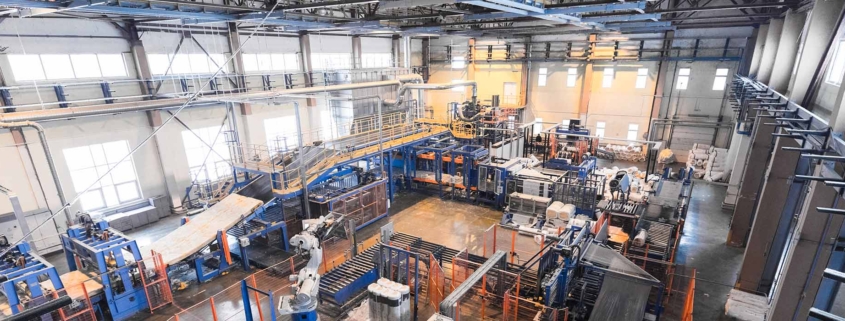What Planning Permits do you require for setting up a Manufacturing Facility?
Exciting news for some manufacturing businesses! As of November 2023, the Industry Growth Program announced applications for funding were open to SMEs and Start Ups within the National Reconstruction Fund priority areas. Eligible businesses can now apply for funding to help commercialise innovative manufacturing ideas and grow their businesses. For some of these businesses, it may mean setting up a new manufacturing facility.
Fitting out or constructing a purpose built manufacturing facility in Victoria can involve a number of approvals, including a planning permit.
Requirements can vary depending on your specific location, the scale of your operation and the type of products you are manufacturing, it is always best to check specific requirements with your local Council and a Planning Consultant like AS Planning.
**The below list is not planning advice.**
Here is a list of 7 common planning considerations for Manufacturing & Processing Facilities in Victoria:
1. Planning Zones:
In Victoria, the Planning Scheme designates different zones for different types of land use. You would typically need to ensure that your chosen location is zoned appropriately for manufacturing activities, with Industrial zoning generally being the most appropriate. It’s essential to ensure that the zoning of the location for your manufacturing and processing facility is accommodating of the use, and that the location is strongly supported by relevant policy and legislation within the local Planning Scheme.
2. Planning Overlays:
In addition to zoning, land may also be covered by additional overlays. These can involve additional permit triggers and policy for a specific site or region. Examples of overlays are Heritage Overlays, Environmental Overlays, Flooding Overlays and Built Form Overlays. If the location of your Manufacturing and Processing facility is affected by overlays it can have significant consequences for your business and any proposed development.
3. Environmental Impact Assessment:
Manufacturing products may involve handling chemicals or producing waste materials, which may trigger certain planning requirements around ‘uses with adverse amenity potential’. You may need an environmental impact assessment to ensure compliance with environmental regulations, generally set by the Environmental Protection Authority (EPA).
4. Business Identification Signage and Advertising:
If your business involves external signage or advertising, you’ll need to consider the signage policies and regulations outlined in the local Planning Scheme. Different areas have different restrictions on signage depending on the location and surrounding neighbourhood character.
5. Parking and Traffic Impact Assessment:
Your Manufacturing and Processing facility may require a car parking reduction (if you can’t provide all required car spaces on site), or may generate increased traffic within the local road network. These are both important planning considerations that the local Council will assess. A traffic impact assessment may be necessary from a Traffic Engineer to justify these elements of your business.
6. Waste Management and Recycling:
Manufacturing processes often generate waste materials. You’ll need to address waste management and recycling requirements outlined in the local Planning Scheme, including methods of waste collection. A Waste Management Plan may be required by Council to justify the waste related processes of your business.
7. Vegetation Removal:
If vegetation is required to be removed to allow for a new Manufacturing and Processing facility, this could trigger the need for a planning permit, depending on a number of factors such as species of tree, size of the property, overlays on the property, etc. An Arborist Report and Native Vegetation Assessment may be necessary if a permit is required for vegetation removal.
Other approvals and considerations for Manufacturing & Processing Facilities in Victoria:
Aboriginal Cultural Heritage:
If your manufacturing facility is located in an area with Aboriginal cultural significance, you may need to comply with requirements that protect the cultural and historical aspects of the area, per the Aboriginal Heritage Act 2006. This could involve undertaking a Cultural Heritage Management Plan (CHMP) which needs to be completed before a Planning Permit can be issued.
Building Permit:
Depending on the scale of your manufacturing facility, you may need a building permit to ensure that the construction and design of your facility comply with building regulations and safety standards. This is typically governed by the Building Act 1993 and the Building Regulations 2018.
Accessibility and Disability Discrimination Act (DDA) Compliance:
Ensure that your manufacturing facility meets accessibility standards outlined in the DDA to accommodate individuals with disabilities.
To determine the specific planning permits and requirements for your new manufacturing business, it’s crucial to consult with your local council and engage a planning consultant familiar with the Victorian Planning Provisions and Planning Schemes.
AS Planning can provide tailored guidance and ensure that you meet all necessary permits and compliance standards for your specific location and operations. Contact us today.






